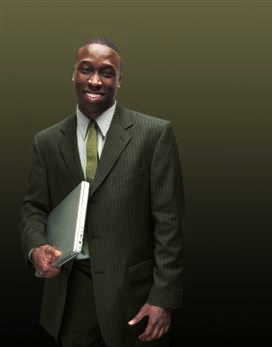Decoding the Dress Code: Is Your Business Formal or Casual?
Not sure of the difference between business casual and business professional work clothes, or which one is appropriate for your business? Different types of businesses and offices have different standards of dress, and depending on your industry or customer base, what your employees wear sends a message about the attitude and professionalism of your business.
Business Professional
A business professional dress code is what one might call the “default” dress code for the types of businesses where dress clothes are considered the norm. Accounting practices, law firms, and other types of business offices where professional attire is expected to be worn on a daily basis set the standard for the business professional dress code. Men’s business professional dress includes a button-down shirt (usually with long sleeves), tie, slacks, and dress shoes at the very least, and may also include a blazer or suit jacket as well. Women’s business professional attire can range among collared shirts or sweaters with dress pants and shoes, or with conservative skirts and dresses.
Business professional attire is most often worn in:
- Professional offices
- Law firms
- Accounting firms
- Financial institutions
- Job interviews
- Etc.
Business Formal
Business formal clothing is the peak of professional work attire. For men, this means a full three-piece suit: dark formal jacket over a long sleeve, button-up dress shirt, dress pants, and tie, all made from the best material. For women, business formal usually means a suit with a conservative skirt, with pantyhose and close-toed dress shoes. In business formal environments, men should also consider including full accouterments with their suits, such as cufflinks and pocket squares.
Even for businesses that have a strict professional atmosphere, dressing in business formal is usually reserved for special events and important occasions. There should be an observable step up from business professional and business formal. While business professional attire is definitely “dressing up,” business formal should be the very best clothing and shoes available.
Business formal events include:
- Award ceremonies
- Charity dinners
- And other formal events
Business Casual
Despite having the word “casual” in the title, a business casual dress code is hardly t-shirts and shorts. If business formal is a step above business professional, then business casual is a step in the other direction. Men’s shirts can be short sleeved, ties can be left at home, and button-up shirts can be replaced with polo shirts, sweaters, or other comparably business-appropriate tops. For women, business casual still means sensible skirts or pants, but allows for a little more variety in color and style than business professional. While most workplaces wouldn’t consider jeans to be appropriate, some might allow for khakis or Dickies in place of formal slacks.
Casual (or “Small Business Casual”)
Businesses that don’t have a company uniform and which don’t require employees to dress in formal wear can be said to have a casual dress code. Although some small businesses do not have a formal dress code, it is important to remember that even the most casual workplace will still have some rules about what can and should be worn. Even if a workplace allows for t-shirts, jeans, and sneakers, employees should still appear presentable in their work clothes. Casual clothes should never be wrinkled, stained, or contain inappropriate messages, and should never make other employees or customers feel uncomfortable.
Looking for more tips on work uniforms? Contact us today at 800-767-5536.
